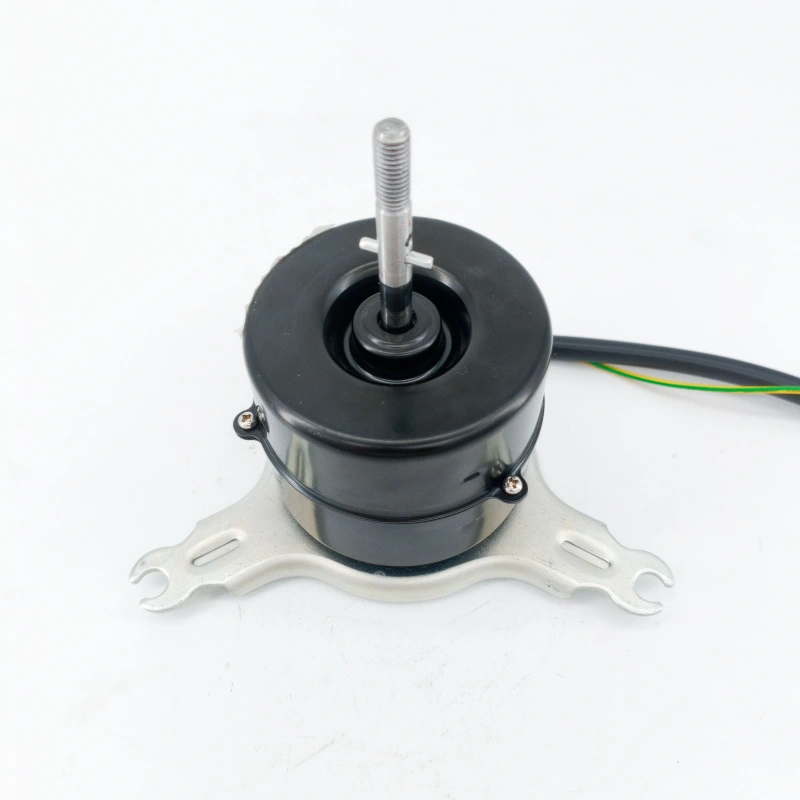1. Core Reasons for Increasing Humidity from Water-Cooled Fans
The cooling principle of a water-cooled fan is “evaporative cooling” — an internal water pump delivers water from the tank to the wet curtain, and then the fan blows air through the moist curtain. When water evaporates, it absorbs heat from the air, thereby releasing cool air. However, this process has two direct effects that lead to increased indoor humidity:
- Significant Increase in Air Moisture Content: After evaporation, water turns into water vapor and spreads into the air, raising the indoor relative humidity. Especially in enclosed spaces, without the circulation of dry outdoor air, water vapor cannot be discharged in a timely manner, causing the humidity to rise continuously. When the relative humidity exceeds 60%, the human body feels sticky; when it exceeds 70%, excess water vapor condenses into water droplets on the surfaces of cooler walls, glass, and furniture, resulting in a “dampness” phenomenon.
- Mismatch Between Usage Scenarios and Product Design: In regions with high inherent humidity, such as southern China during the plum rain season or coastal areas, the evaporation process of water-cooled fans will “add fuel to the fire.” Additionally, some low-cost water-cooled fans lack humidity control functions; even when the indoor humidity exceeds the standard, they continue to evaporate water, further worsening humidity. Moreover, adding too much water to the tank or failing to clean the wet curtain in time may lead to bacterial growth, making the humid environment accompanied by odors and health risks.
2. Practical Solutions to Avoid Humidity Issues
To balance the cooling effect of a water-cooled fan and maintain a dry indoor environment, measures should be taken from three dimensions: “humidity control, promoting air circulation, and proper usage.” The specific methods are as follows:
- Maintain Indoor Air Circulation and Avoid Enclosed Usage: This is the most fundamental solution. When using a water-cooled fan, be sure to open doors, windows, or exhaust fans to allow humid air to be discharged promptly while bringing in dry outdoor air. It is recommended to open windows for ventilation for 10 minutes every 1-2 hours. Especially during nighttime sleep, do not completely close doors and windows; leave a small gap for air circulation.
- Reasonably Control Usage Duration and Water Quantity: There is no need to run the water-cooled fan continuously for a long time. Instead, adopt an “intermittent operation” mode — turn it on for 1 hour and then off for 30 minutes. This not only keeps the room cool but also prevents excessive humidity. When adding water, follow the principle of “small amounts and frequent additions”; do not fill the tank to full capacity. It is recommended to add water to 1/2 to 2/3 of the tank’s volume to reduce the total amount of evaporated water. Additionally, adding a small amount of ice cubes to the water can not only enhance the cooling effect but also slow down the evaporation rate and reduce moisture release.
- Choose Products with Humidity Control Functions: When purchasing, prioritize water-cooled fans equipped with “humidity sensors” and “automatic humidity control” functions. These products can monitor indoor humidity in real-time; when the humidity exceeds 60%, they automatically reduce the fan speed or stop evaporation, maintaining the indoor humidity within a comfortable range (40%-60%). If using an ordinary water-cooled fan, you can match it with an independent hygrometer to monitor humidity changes at any time and manually adjust the usage status.
- Regular Cleaning and Maintenance to Prevent Mold Growth: Humid environments are prone to bacterial and mold growth, which not only produces odors but also affects health. It is recommended to clean the water-cooled fan once a week: disassemble the wet curtain, rinse it with clean water, and dry it in the sun; clean the water tank by wiping the inner wall with diluted white vinegar or disinfectant to remove scale and bacteria; clean the fan blades to avoid dust accumulation. When not in use for a long time, drain all water from the tank, dry it thoroughly, and then store it to prevent internal mold growth.
- Use in Conjunction with Other Cooling Tools: In high-humidity environments, water-cooled fans can be used together with air conditioners or dehumidifiers. When using an air conditioner, first set the temperature to around 26°C to lower the indoor temperature, then turn on the water-cooled fan for auxiliary cooling to reduce the operating time of the air conditioner. If the indoor humidity is extremely high, you can first turn on the dehumidifier for 30 minutes to reduce the air humidity before using the water-cooled fan, avoiding the superposition of moisture.
3. Summary
The humidity problem of water-cooled fans is essentially an inevitable result of the “evaporative cooling” principle. However, through scientific usage methods and product selection, its impact can be minimized. The core principles are “avoiding enclosure, controlling humidity, and regular maintenance” — maintaining ventilation to discharge moisture in a timely manner, reasonably controlling the usage rhythm to reduce moisture generation, selecting intelligent products for precise humidity control, and conducting regular cleaning to prevent mold growth. As long as you master these skills, you can enjoy the coolness and convenience brought by water-cooled fans in summer while staying away from humidity issues and having a dry and comfortable living environment.




